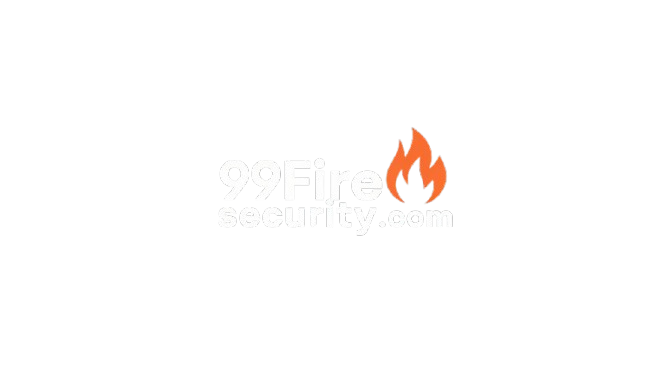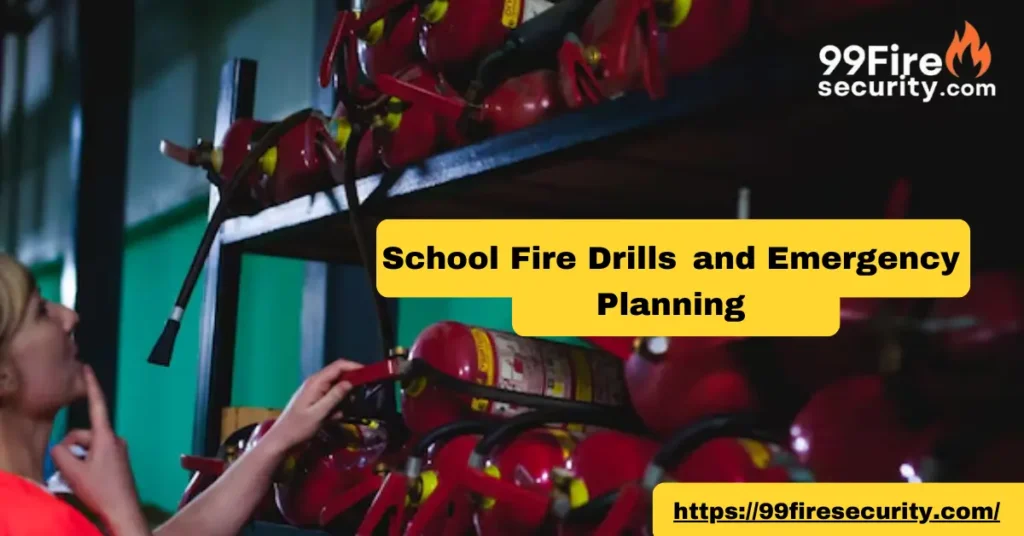Introduction
In the case of a School Fire emergency, it is important for schools to plan for fire safety to keep students, staff, and visitors safe. Some planning and preparation ahead of time, like fire drills and other emergency procedures, can be the difference between life and death. Regular fire drills teach everyone what needs doing when the alarm sounds, and planning for emergencies ensures that in the event of a fire everyone knows what to do. Here, we discuss the significance of fire drills and emergency preparedness and share fire emergency best practices for schools.
1. Fire Drills in Schools: Why They Are Important?
Why Fire Drills Are Essential

Fire drills are essential to school safety plan. Simulated exercises such as these allow for staff and students to be trained on how to react in a fire, as well as giving them the practice they need in order to respond in a timely manner. “School Fire drills reduce panic, speed up the evacuation process and are a fundamental process that ensures everyone knows what to do when an alarm goes off.”
Most local and state laws mandate that schools hold fire drills a few times a year. Fire drills vary based on jurisdiction, but schools are typically required to conduct at least one drill per semester, and some areas also require monthly drills. Holding fire drills is not just a matter of adhering to safety regulations; it is also about helping schools prepare for potential fire hazards.
How Fire Drills Save Lives
Fire drills are practice for students and staff to get muscle memory and calm reflexes during emergencies. People who have engaged in regular drills are more likely to exit effectively during a real fire, and less likely to be injured or killed. Fire drills help ensure that no one gets left behind and that students and staff know where to go for safety.
1. Creating a Fire Safety Plan for Educational Institutions
Fire Safety Plan: Key Components
Every school needs a solid fire evacuation plan. This plan should include:
Evacuation Routes and Exits:
Exit routes should be clearly marked and posted in each classroom, hall, and common area. All students and staff should know the nearest exits and alternative exit routes in the event that the primary exits are blocked.It should be located a safe distance away from the building. They should be accessible, with no traffic or obstructing features in the way.
Fire Safety Equipment The positioning of fire extinguishers, smoke alarms, School Fire alarms, and emergency lighting throughout the building. Thus, regular checks and maintenance of this equipment are integral for making it function properly when required.
The Roles and Responsibilities in an Emergency
If a fire emergency arises, each staff member must be aware of their specific obligations:
- Teachers: Teachers are responsible for bringing students out of their classrooms and ensuring they’re accounted for at the assembly area.
- Support Staff: Custodians, and administrators and other support staff should assist with evacuation, providing guidance and ensuring evacuation of every part of the school.
Emergency personnel, like fire and medical responders, will take over once they arrive on-site to help restore order and verify everyone is okay.
Identifying Vulnerable Areas
Schools should take measures to identify high-risk areas that might be an obstacle in the event of an emergency, including:
- Classes for Special Needs Students: Students with physical disabilities or other needs should be evacuated safely. If necessary, assign staff to assist these students.
- Crowded Areas: Hallways, cafeterias or gymnasiums where there are large crowds of students may take longer to evacuate. The reason to be cautious of these areas is that they might require supplemental planning to ensure an effective and efficient evacuation.
2. Disturb Fire Drills Properly

The date and the frequency of conducting fire drills
Fire drills should be performed regularly throughout the school year. Drills should be done at different times of the day to prepare for whether there’s an emergency when kids are coming and going or in the middle of the day. Depending on local regulations, this can vary in frequency, but generally schools should perform at least one School Fire drill per semester. Drills during different types of inclement weather and also at various times (lunch time, classroom transitions, etc.) help prepare students and staff for all scenarios.
Simulating Actual Fire Scenarios
Periodically changing scenarios can make School Fire drills more effective. One drill might simulate a fire in the classroom, whereas another drill might simulate a fire in the hallway or cafeteria. It helps staff and students prepare for various kinds of emergencies and understand how to evacuate from different parts of the building.
Engaging the Entire School Community
Although students are the focus in School Fire drills, involvement should extend to all in the school, including staff and administrators. Frequent drills help everyone know what to do and what his or her role is when the alarm goes off. It’s important that everyone takes the drills seriously so that everyone understands that practicing for a real emergency is the whole point.
3. Focus on Preparing for Students with Disabilities
Adjusting Fire Drill Procedures
Students with special needs requiring acoustic adjustments due to physical, mental or sensory impairments might need special accommodations during a School Fire drill. We should have well‐defined pathways for students to vacate buildings in an emergency.
- Evacuation Help: Cover your bases by assigning staff to help students with mobility issues (wheelchairs, crutches, etc.).
- Provide visual or audio aids: For students who are hearing impaired make sure there are visual alarms and for students who are visually impaired provide them with auditory cues or additional staff who will aid in an evacuation.
- Personalized Plans: Take each student’s needs into consideration and develop a personalized fire drill plan for them, especially if the individual needs more assistance or time.
Designated Safe Zones
Be sure to do so with safe zones for special needs students to wait during the evacuation. These zones must be easily accessible and away from the main flow of evacuees to prevent backup and confusion.
4. Communicating at the Time of the Fire Emergency

Feature of Words to Communicate Clearly
And, clear communication is essential in case of a fire emergency. Schools need an established communication system for rapid announcements. This system may include:
- Fire Alarm System: A loud, clear fire alarm that sounds throughout all areas of the school.
- Public Address System: A PA system is used to make clear announcements during an emergency and to provide instructions and updates.
- Staff Emergency Communication: Make sure you have a way for all staff to still be able to communicate with each other and emergency personnel. Having a communication plan for parents may be useful too.
Teachers and Their Role in Communication
The teachers must ensure that the students stay calm and follow the evacuation procedures. In some situations, teachers may also need to contact the students’ parents or guardians and inform them what happened. Furthermore, teachers need to ensure that all pupils are checked for safety before leaving the assembly point.
5. Post-Evacuation Procedures
Accountability and Roll Call
Once the building has been evacuated the teachers also need to do roll call to make sure everyone is accounted for. This, is the most important step towards ensuring that nobody is left behind. If some students are unaccounted for, this should be reported right away to emergency responders.
Waiting for the All-Clear
The students and staff should stay in the assembly points until emergency personnel states that it is safe to return to the building. Schools should have a clear strategy for how to deal with the wait, including meeting basic needs for necessities such as food and shelter if needed.
6. Rinse and Repeat

Evaluating Fire Drills
After every fire drill, it is valuable to review how the drill worked and whether there were any issues or delays in the evacuation process. This feedback can help you identify areas for improvement and fine-tune the processes for future drills.
Updating Fire Safety Plans
Regular and periodic review and revision is required for fire safety plans. Updates on evacuation routes or procedures are critical when the layout of the school building, staff or student population change.
Conclusion
Fire drills and other fire safety planning are an important part of keeping students, staff and visitors safe in schools. A successful fire safety plan consists of regular fire drills, well-maintained safety equipment, clear evacuation routes, and comprehensive training for staff and students. However, with the right preparation and practice, schools can prevent injury and make sure the fire is extinguished quickly and everyone is evacuated safely.
FAQs
- So how often should schools have fire drills?
Fire drills. Most state education codes specify that these drills must occur at least once every semester — but some schools go beyond that. It should also vary in time and circumstances to prepare for that. - How should schools deal with students with special needs during a fire drill?
They should have pre-established evacuation procedures for students with special needs; staff should be assigned to aid them; accommodations, such as visual alarms or additional time for evacuations, should be made. - Verisk worked with Andrew Lema to get the answers to these questions and others:Who is responsible for ensuring fire safety in schools?
The school administration is in charge of fire safety, including emergency plans, drills, maintenance of fire safety equipment, and training for staff and students. - What advice should a teacher have if a student is unaccounted for following an evacuation?
If a student is unaccounted for after evacuation, educators must promptly notify emergency responders and share any relevant information to aid in locating the student. - What can schools do to enhance their fire safety plans?
Schools should conduct routine evaluations of their fire safety plans and follow up after fire drills to identify and rectify issues that arose, in order to improve safety protocols.


